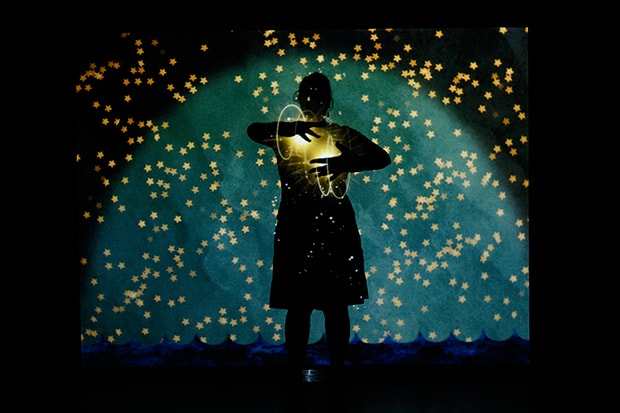Visualizing Psyches
These photographed and filmed states presumably demonstrated moments where psychology might speak through physiology. Just as hysterics of the late nineteenth century purportedly demonstrated their pathology by way of susceptibility to hypnotism and performative outbreaks without ever speaking, the anthropologists hoped that the Balinese dances would accomplish the same. And just as hysteria had been a platform for developing both photographic and psychotherapeutic techniques, this situation was also a site for methodological innovation.1
Hysterics and psychotics, however, posed problems for scientific authority as well. In demonstrating the methods of analysis and medicine, the hysteric was complicit in producing the medical gaze, but also served as the site that threatened its authority by revealing the truth that the doctor, too, was part of the experiment. Mead and Bateson’s work is, in this sense, a classically schizoid practice where there is a productive conflict between the form and the content. The form was scientific documentation, and the content was the psychotic photographic record. Mead was never comfortable with what she had discovered in Bali and attempted to reassert voiceovers and modern aesthetics of authority upon return to the work. Bateson also appeared to struggle. He openly confessed to finding the Balinese “boring” and perhaps unworthy as objects of study. He found their culture incapable of change, lethargic, and stuck in plateaus. In Bateson’s words, “the whole population was markedly slow both in intellectual response and bodily movement” and he characterized the culture as possessing an appearance of “impenetrable dullness.”2
While initially disinterested in the Balinese, Bateson later commenced to embrace these performative methods and to abandon ideals of objectivity. This subjective and ecological—perhaps psychotic—perspective on knowledge came at the cost of his accreditation as a research scientist. However, what was not popular in the academy was popular elsewhere.
Transferring from Ethnographic Encounter to Therapeutic Techniques
While Bali may seem distant from concerns with computing and cybernetics, it was not.3 In a curious turn of history Bateson was to become the guru of an emergent west coast communal culture and an icon for many of the ideals of a new information society being birthed in the nascent Silicon Valley and elsewhere. Most prominently displayed in venues like the Whole Earth Catalogue, Bateson’s ideas and concepts were part of a new techno-utopic culture based in communication theories, cybernetics, and environmentalism.4 From the counterculture to the architectural utopias of Buckminster Fuller, to political theorists at Harvard such as Karl Deutsch, Bateson’s name—and his reconceptualization of mind, ecology, and schizophrenia—were regularly cited. What began as ethnography in a colonial situation turned into a philosophy for computing and a beacon for self-help and therapeutic culture.
Bateson’s made the shift to discourses of communication, control, and cybernetics during the war when he, like most anthropologists, readily went to work for the Office of Strategic Services, serving 20 months in Ceylon, India, Burma, and China in the service of the Allied forces as an interpreter of local custom and culture (a fact he later critiqued about himself). While initially excited, he eventually found the work dull and accomplished little.
With one exception: he briefly operated a radio station undermining Japanese propaganda in Burma and Thailand. Studying the content of broadcasts, Bateson decided to engage in acts of positive feedback. He related, “We listened to the enemy’s nonsense and we professed to be a Japanese official station. Everyday we simply exaggerated what the enemy was telling the people.”5 He recalled how his work in ethnography had made him recognize that psychology was a matter of interactivity, not an isolated aspect contained within individual subjects. Linking together his observations on the schizophrenic subject of the Balinese, the nature of propaganda and media, and the way cultures engage in conflict, Bateson came to reformulate mind in terms of communication and, in his words, “ecology.” His future interest in cybernetics emerged out of these seemingly unrelated observations about culture, propaganda, and feedback. After the war, upon his return to the States, he went on to be one of the most active participants in the Macy Conferences on Circular Feedback and Mechanisms.6
It is a testimony to the methodological rather then ontological focus of cyberneticians, and Bateson in particular, to witness how readily the ethnographer displaced any concern for taxonomy or content for a focus on transferable techniques that could be scaled to model anything from cultural conflict to personal psychic suffering in terms of communication.
Rethinking Psychology
In the early 1950s, inspired by these ideas of communication and cybernetics and disenchanted and frustrated by academic life after a brief stint at Harvard, where he was dismissed, Bateson went to Palo Alto to work as an ethnographer in the psychiatric unit at the veterans’ hospital. His work with these patients was driven by an overwhelming sense of depression about his previous war work and the seeming inevitability of conflict and violence in human relations.
In the hospital, Bateson had the opportunity to merge his work with communication and cultural conflict with psychology and psychiatry. His job was to provide additional data to supplement the work of a team of psychiatrists. Working with patients coming from the Korean War and the Second World Wars, he recognized that many of the pathologies of addiction and battlefield trauma might have emerged from the result of conflicts in signals that emerged at the same time without hierarchy between sets. In this case, the signals were “Thou Shalt Not Kill” and “Thou Should Kill.” His innovation was to recognize that the environment that patients were in might be part of their psychological system, and that if two contradictory messages arrive at the same time, this presents problems for the subject. Applying communication theories to minds, Bateson predicted that perfectly reasonable people might become dangerously psychotic if faced with incommensurable messages.7
Inspired by the Macy Conferences, Bateson—with a methodological zeal that marked all his work—was steadfast in applying theories of mathematics, logic, and communication to his ethnographic observations. Witnessing the internal divides of patients he began to think about schizophrenia as a problem with typing, or finding “sets,” as defined by Bertrand Russell, by which to hierarchize and organize information. Schizophrenia, according to Bateson, is the result of closed systems for which there are two self-negating terms. This dilemma is classically explained in the following terms: person must do X, X negates Y, person must also do Y, and therefore, neither can be executed. The person cannot ignore X or Y, but also cannot comment on the absurdity of the situation.8
For example, a child is commanded to be “spontaneous” or “creative.” To obey the command is to fail to be either. To disobey is to break a rule. Either way, the subject is caught unless they are able to suggest an external option out of a different framework, for example, retorting: “That is not possible,” or “I don’t understand the rules.” These responses operate at a different logical level, with points of reference in a different communicative situation.
Bateson argued that schizophrenia is not an automatically pathological state. But it was a communication structure capable of being modeled, as in theories of communication, as a system and a channel between and within the body, different actors, and the environment. For Bateson this situation made the mind an “ecology.”9
If schizophrenia is a potentially dangerous condition, as the porpoise demonstrated, it is also a creative one. It is like “play,” in Bateson’s words, a potential space of experiment and testing of different forms. Schizophrenia, Bateson continued, can best be understood as “trouble in identifying and interpreting those signals which should tell the individual what sort of message a message is, i.e., trouble with the signals of the same logical type as the signal. This is play.” Schizophrenia is productive. But, it takes pathological character when subjects do not recognize their situation as playful, and respond by literally turning the game into the world.10
Bateson’s conclusion was that the pathological form of schizophrenia is an inability to comprehend the structure of the communicating situation. Schizophrenics receive signals, but cannot respond in a purposeful way (i.e. with a deferred known goal) because they have no other, different communicative situations to compare, contrast, or use, outside of the immediate message. Schizophrenia is a problem of failing to circulate information and accumulating too much in one place: too many signals interfering with each other.
- Georges Didi-Huberman, The Invention of Hysteria: Charcot and the Photographic Iconography of the Salpêtrière, ed. J. M. Charcot (Cambridge: MIT, 2003). [↩]
- David Lipset, Gregory Bateson: The Legacy of a Scientist (Englewood Cliffs: Prentice-Hall, 1980) 151. [↩]
- It should be noted that structuralist anthropology engaged heavily with linguistics, communications theories, and cybernetics at the time, and must be seen as closely related to Mead and Bateson’s efforts. See also Claude Lèvi-Strauss’s work in the The Savage Mind and Structural Anthropology. [↩]
- Fred Turner, From Counterculture to Cyberculture: Stewart Brand, the Whole Earth Network, and the Rise of Digital Utopianism (Chicago: U of Chicago P, 2006). [↩]
- Quoted in Lipset 1980: 174. [↩]
- Steve Heims, The Cybernetics Group (Cambridge: MIT, 1991). [↩]
- Lipset 1980, Bateson et al. 1956. [↩]
- Bateson et al. 1956; Bateson 2000 [1972]: 177, 80, 89, 365. [↩]
- Bateson 2000 [1972]. [↩]
- Bateson 2000 [1972]: 175-77. [↩]




